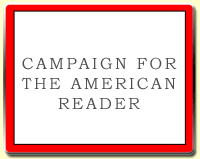 Kate Merkel-Hess is a Ph.D. Candidate in Chinese history at University of California, Irvine, editor of the blog The China Beat, and has contributed to the Times Literary Supplement, Current History, History Compass, The Nation (online edition), Far Eastern Economic Review (online edition), The Huffington Post, and History News Network.
Kate Merkel-Hess is a Ph.D. Candidate in Chinese history at University of California, Irvine, editor of the blog The China Beat, and has contributed to the Times Literary Supplement, Current History, History Compass, The Nation (online edition), Far Eastern Economic Review (online edition), The Huffington Post, and History News Network.Her new book is China in 2008: A Year of Great Significance (edited with Kenneth L. Pomeranz and Jeffrey N. Wasserstrom).
Last week I asked her what she was reading. Her reply:
I tend to read multiple books at once, and I try to mix purposeful reading that I’m doing forLearn more about Kate Merkel-Hess at The China Beat.research or teaching with reading that I run across browsing the new books at the library or based on recommendations from friends.
At the moment, I’m re-reading Jonathan Spence’s The Chan’s Great Continent: China in Western Minds, which is an easy book to dip in and out of as each chapter addresses a different set “Western observers” of China. I’ve assigned the book for a course this summer, and so have been reading with an eye to what questions the book will raise for my students. Another China-related book that I’ve just begun is Confessions: An Innocent Life in Communist China by KangZhengguo. Kang laoshi was my second-year Chinese teacher and, as students often do, my classmates and I mused about his personal story (which seemed drama-filled). In this case, he’s written a 400-page memoir, and so now I can actually know some of the details.
I recently finished reading Earth Abides by George R. Stewart. With the H1N1 virus in the news, a friend urged me to pick up this story about a small group of San Francisco-based survivors of a massive pandemic. I am always fascinated by post-apocalypse stories for the questions their authors must engage about what social customs and practices will survive, what will be cast out as useless (religion is one thing that Stewart’s band of survivors decides doesn’tserve them well), and how survivors piece together stories of what has happened based on their limited, local knowledge (a few other good examples of this are Alas, Babylon by Pat Frank and the recent television series Jericho). I also enjoy the domestic details of such stories—how authors decide their protagonists manage to survive, what remnants of civilization serve useful and which skills they need to develop further—that goes back to my childhood love of pioneer stories like The Little House in the Big Woods.
I once read a declaration by a writer (perhaps it was Stephen King, but I’m not certain) that we should make a point of regularly reading books that we pluck off the library shelves without recommendation. However, the one of this sort that I’m reading at the moment was not a completely blind choice. I read a New York Times reviewof Suite Française by Irène Némirovsky a few years ago and so when I saw it at the library decided to nab it. Némirovsky wrote the first sections of this unfinished novel while living in France in the early 1940s; in 1942, Némirovsky died at Auschwitz. Her family rediscovered the manuscript in the late 1990s and it was published in France in 2004. As the Times points out, reading the novel raises a tension because the events are in part autobiographical, and were written almost at the precise time they were occurring—the novel opens with scenes of panicked Parisians fleeing the city ahead of the invading Germans. I’m looking forward to seeing how it unfolds.
--Marshal Zeringue









































